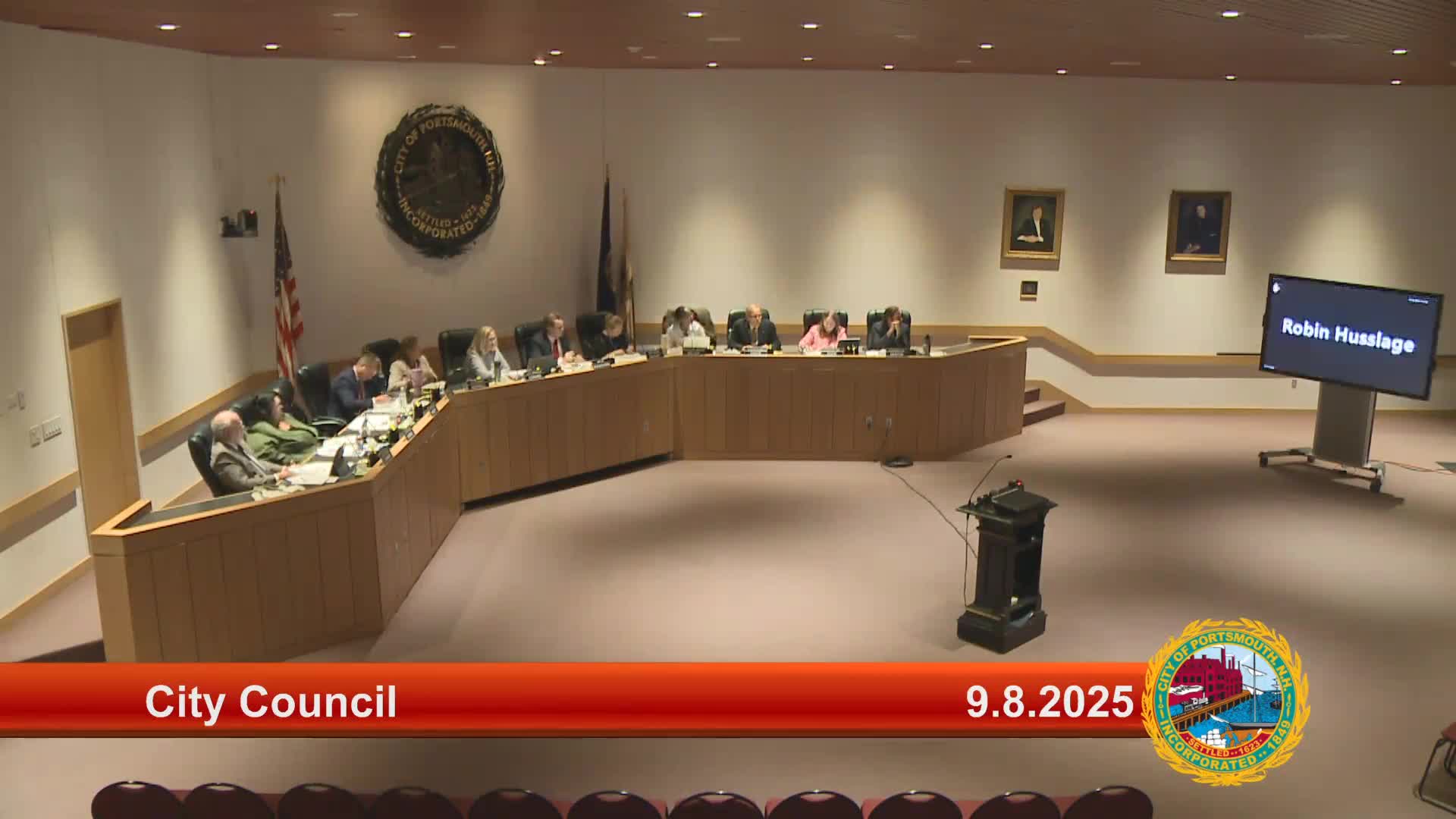Robin Huslidge advocates for Islington Creek neighborhood rezoning plan changes
September 05, 2025 | Portsmouth City Council, Portsmouth, Rockingham County, New Hampshire
This article was created by AI summarizing key points discussed. AI makes mistakes, so for full details and context, please refer to the video of the full meeting. Please report any errors so we can fix them. Report an error »

In the heart of Portsmouth, New Hampshire, the City Council convened to discuss pivotal zoning changes that could reshape the Islington Creek neighborhood. As the evening unfolded, Robin Huslidge, a resident of Rock Street, passionately addressed the council, advocating for a transition in zoning that would better protect the character of her community.
Huslidge expressed her support for the proposed changes, which aim to remove the Downtown Overlay District and the North End Incentive Overlay District that have long encroached upon Islington Creek. She argued that these overlays were never appropriate for a residential area and that the current zoning allows for large developments, such as hotels and conference centers, which clash with the neighborhood's small-scale residential charm. While she welcomed the proposed shift from CD 5 to CD 4 zoning, she urged the council to consider further adjustments to ensure the neighborhood remains a welcoming place for families.
The discussion highlighted the importance of building heights in maintaining the neighborhood's character. Huslidge pointed out that the proposed maximum height of 50 feet for new developments along Bridge and Hill Streets would still create a stark contrast with the existing historic buildings, which typically stand at one to two stories. She called for a reduction to a maximum of 40 feet, emphasizing that such changes are essential for preserving the community's integrity.
As the public hearing concluded, council members engaged in deliberations about the zoning changes. Councilor Denton reflected on past discussions from 2019, expressing a desire to move forward without waiting for the master planning process to conclude. He noted the importance of allowing residential options in areas previously designated for commercial use, a shift he deemed necessary to correct past mistakes.
Councilor Cook raised questions about specific lots affected by the zoning changes, seeking clarity on whether they could remain fully within the existing character district. The council's discussions revealed a careful balancing act between accommodating new developments and respecting the established neighborhood fabric.
Councilor Moreau reminded his colleagues that these zoning changes do not increase density but rather decrease it, a point that resonated with concerns about the long-term impact on the community. He acknowledged that many areas are already developed, suggesting that the changes might not yield immediate effects but are crucial for future planning.
As the council moved to schedule a final reading of the proposed changes for September 24, 2025, the conversation underscored a broader commitment to ensuring that Portsmouth's growth aligns with the needs and desires of its residents. The outcome of these discussions will not only shape the Islington Creek neighborhood but also set a precedent for how the city approaches development in the years to come.
Huslidge expressed her support for the proposed changes, which aim to remove the Downtown Overlay District and the North End Incentive Overlay District that have long encroached upon Islington Creek. She argued that these overlays were never appropriate for a residential area and that the current zoning allows for large developments, such as hotels and conference centers, which clash with the neighborhood's small-scale residential charm. While she welcomed the proposed shift from CD 5 to CD 4 zoning, she urged the council to consider further adjustments to ensure the neighborhood remains a welcoming place for families.
The discussion highlighted the importance of building heights in maintaining the neighborhood's character. Huslidge pointed out that the proposed maximum height of 50 feet for new developments along Bridge and Hill Streets would still create a stark contrast with the existing historic buildings, which typically stand at one to two stories. She called for a reduction to a maximum of 40 feet, emphasizing that such changes are essential for preserving the community's integrity.
As the public hearing concluded, council members engaged in deliberations about the zoning changes. Councilor Denton reflected on past discussions from 2019, expressing a desire to move forward without waiting for the master planning process to conclude. He noted the importance of allowing residential options in areas previously designated for commercial use, a shift he deemed necessary to correct past mistakes.
Councilor Cook raised questions about specific lots affected by the zoning changes, seeking clarity on whether they could remain fully within the existing character district. The council's discussions revealed a careful balancing act between accommodating new developments and respecting the established neighborhood fabric.
Councilor Moreau reminded his colleagues that these zoning changes do not increase density but rather decrease it, a point that resonated with concerns about the long-term impact on the community. He acknowledged that many areas are already developed, suggesting that the changes might not yield immediate effects but are crucial for future planning.
As the council moved to schedule a final reading of the proposed changes for September 24, 2025, the conversation underscored a broader commitment to ensuring that Portsmouth's growth aligns with the needs and desires of its residents. The outcome of these discussions will not only shape the Islington Creek neighborhood but also set a precedent for how the city approaches development in the years to come.
View full meeting
This article is based on a recent meeting—watch the full video and explore the complete transcript for deeper insights into the discussion.
View full meeting
